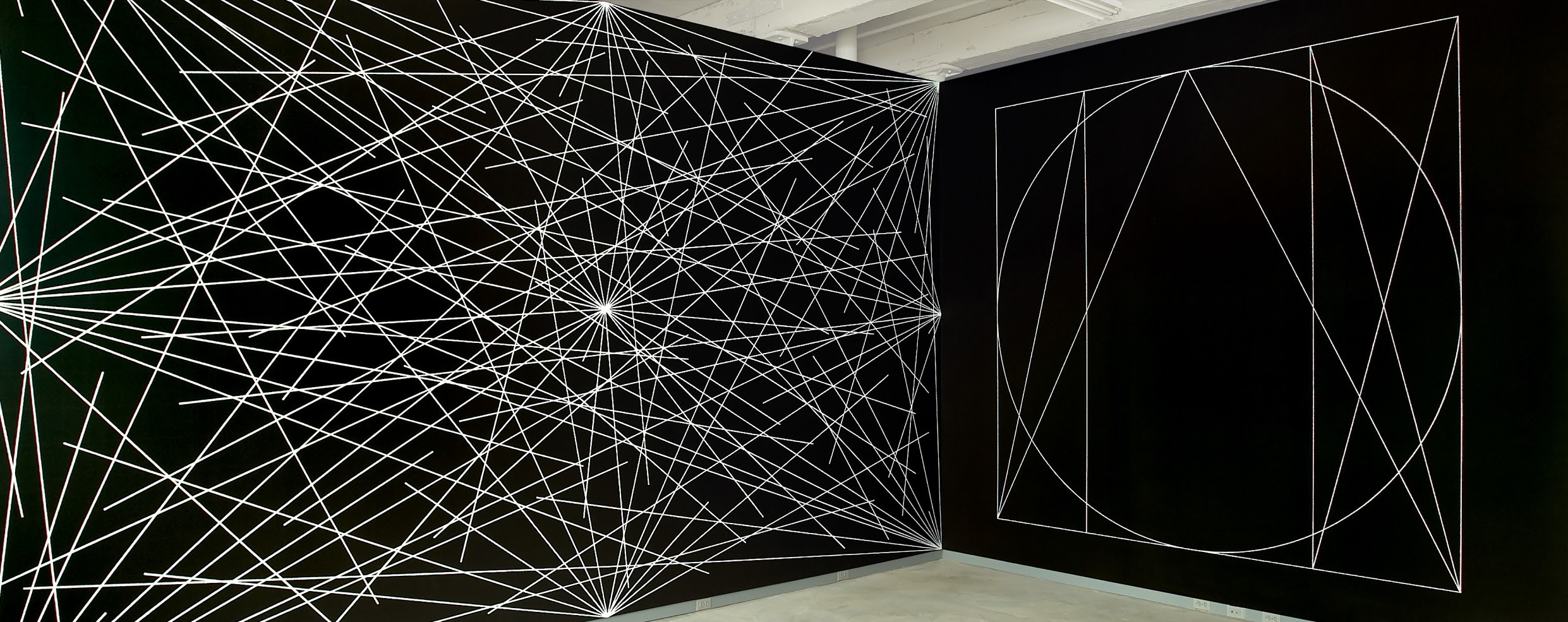Sol LeWitt
- Sol LeWitt
A 6-inch (15 cm) grid covering each of the four black walls. White lines to points on the grids. Fourth wall: twenty-four lines from the center, twelve lines from the midpoint of each of the sides, twelve lines from each corner. (The length of the lines and their placement are determined by the drafter.) (Detail: 4th wall only)
July 1976
White crayon lines and black pencil grid on black wall
Whitney Museum of American Art, New York, Purchase with funds from the Gilman Foundation, Inc. 78.1.1-4
First Installation
Detroit Institute of Arts, Detroit; First installation (4th wall only): The Museum of Modern Art, New York, January 1978
First Drawn By
Jo Watanabe
MASS MoCA Building 7
Ground Floor
Wall Drawing 289 was initially conceived as a four-wall drawing. The drawing consists entirely of white crayon lines drawn to points drawn on the wall in a six-inch pencil grid. Sol LeWitt chose to present only the fourth wall at MASS MoCA. This wall displays the composite of the instructions for each of the first three walls: 24 lines from the center, 12 lines from the midpoint of each side, and 12 lines from each corner.
This work belongs to a series of drawings, first installed between 1973 and 1976, which are often referred to as location drawings because the artists instructions guide the draftsmen to execute the drawing based on points, or locations, on the wall. In other words, the instructions present a sort of drawing problem that the draftsmen must solve. Wall Drawing 289, one of the last works in the location series, differs from its predecessors in that LeWitt’s instructions define the starting locations of the lines, but not where they end (other than the stipulation that they end at a point on the grid.)
Backstory
Each of the lines in Wall Drawing 289 must end at a point created by the six-inch graphite grid that the draftsmen first draw on the wall, but it is up to the draftsmen to determine at which point each line should end. To do this, they use red string to stand in for the white lines. This allows them to step back and examine and alter the placement of a line before they draw it in crayon.


